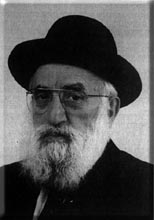Beit Midrash
- Sections
- Chemdat Yamim
- Ein Ayah
One who spends a long time at his table [merits long life], for maybe a poor person will come along and he will provide him with something, as the pasuk says: "The altar of wood was three cubits high…" (Yechezkel 41:22) and the pasuk [continues]: "He said to me: ‘This is the table that is before Hashem.’" It opens with the altar and finishes with the table. Rabbi Yochanan and Rabbi Elazar both say: When the Beit Hamikdash existed, the altar would atone for Israel, and now a person’s table atones for Israel.
Ein Ayah: Certainly kindness and generosity are foundations of the world any way they are performed. However, we are also commanded to be wise in dealing with the needs of the poor. It is best to handle matters of tzedaka in a manner that will protect society from poverty.
The preferred manner is for the community to take responsibility for the needs of the poor in an organized, efficient, and complete manner. However, when the circumstances do not allow this to happen, individuals have to take responsibility for the giving of tzedaka and see to the realization of the needs to the best of their abilities and resources. When one is forced to act as an individual, he is still able to collaborate in spirit with the group of other people who do acts of kindness that cumulatively save many from hunger, disease, and pain.
The altar is a symbol of national unity, for it is forbidden for there to be more than one altar in the "place that Hashem will choose." In fact, when members of the tribes of Gad and Reuven built an altar and the rest of the nation thought they were planning to sacrifice on it, people of the nation were very upset, because they saw it as weakening the power of national unity.
The gemara talks about a time when the Beit Hamikdash stood, which refers to the period when the nation was strong, from both a physical and a spiritual perspective. At that time it was possible to utilize national institutions, which reflected the vibrancy of the nation, to meet the needs of people who needed various types of help. The idea of the altar atoning for Israel reflected the improvement in matters of ethics, whether in the realm of relations between man and his Maker or man and his fellow man. The national structure facilitated effective achievement in these areas.
Now that there is no Beit Hamikdash, the individual needs to ‘pick up the slack’ through his personal table, when he simply and literally gives bread to the poor. This table is an unfortunately necessary replacement when there is no an altar and that which it represents. This gemara stresses that whenever there is an opportunity to be generous in a communal setting, all the more so on a national level, we should seize that opportunity. It is wonderful to donate to a general fund for relief of those in suffering. In that way, we get closer to the ideal of the altar.

"Even the Bad is Just "Gradual Good"
Ein Aya Shabbat 5,18
Rabbi Ari Shvat | Adar 5783

The Elusive Inheritance of Personality Traits
Various Rabbis | 5769

The Benefits of Admonishing Even When Unheeded
Ein Aya Shabbat 5,17
Rabbi Ari Shvat | Adar 5783





















